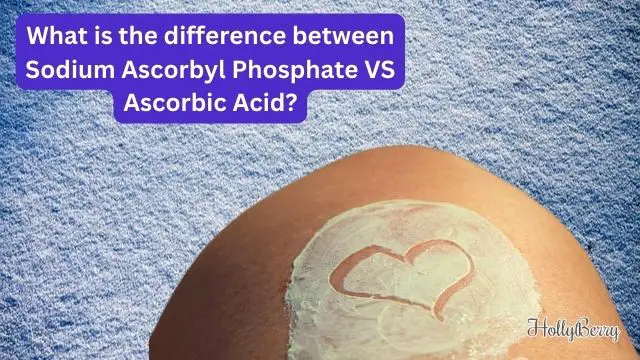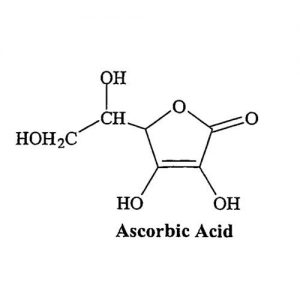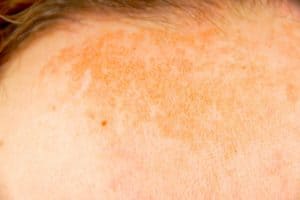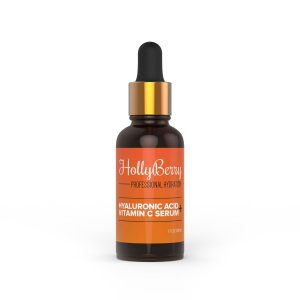Updated 02/01/2023

What is the difference between Sodium Ascorbyl Phosphate VS Ascorbic Acid?
The quick answer is:
Sodium Ascorbyl Phosphate (SAP) is a stable, water-soluble derivative of ascorbic acid (vitamin C). It is a more stable form of vitamin C than ascorbic acid and is less likely to be oxidized.
This form of vitamin C is more easily absorbed by the skin, making it a better choice for topical treatments. Ascorbic acid, on the other hand, is a form of vitamin C that is not as stable and is more prone to oxidation.
It is more commonly used in dietary supplements and food products. Ascorbic acid is not as easily absorbed by the skin and is better suited for internal use.

Sodium Ascorbyl Phosphate
(SAP) is a Vitamin C derivative produced through the direct phosphorylation of ascorbic acid and sodium salt.
A process that involves suspending l-ascorbic acid and sodium in an oxygenated, non-hydroxylic solvent and then treating the mixture with a phosphorylating agent.
The result is a highly stable water-soluble compound with a pH value of 7 that can be used in many skincare products.
According to some studies, including one by The Cosmetics Database, Sodium Ascorbyl Phosphate is 99% safe as an ingredient for the production of skincare products with only very few health concerns.
These studies claim that sodium ascorbyl phosphate has powerful antioxidant properties as it can scavenge for and neutralize free radicals thereby reducing oxidative stress.

This results in the slowing down of the ageing process as well as the formation of wrinkles. The anti-ageing property of beauty products containing sodium ascorbyl phosphate comes from the ability of the product to stop the oxidation of sebum.
Sodium ascorbyl phosphate is said to be able to reduce sebum oxidation by up to 40%.
Sodium Ascorbyl Phosphate also has been proven to be able to penetrate the skin’s lipid barrier with ease since it has a salt molecule attached to it. It can do this without causing any irritation to the skin, to inhibit the production of melanin.
By preventing the synthesis of melanin, sodium ascorbyl phosphate plays a vital role in treating the many troubles of hyperpigmentation.
There have also been studies showing that sodium ascorbyl phosphate can confer strong antimicrobial properties even when used in very little concentration (even as low as 1%). This, therefore, makes it a perfect ingredient for beauty products.
It can also be paired with other key ingredients to prevent cosmogenesis and other forms of inflammation by inhibiting lipid peroxidation.
Sodium Ascorbyl Phosphate also has many other properties such as anti-inflammatory properties, anti-acne properties, skin lightening properties as well as photo protection properties.
Ascorbic acid (also known as l-ascorbic acid) on the other hand is the main form of Vitamin C that occurs naturally in food. It is usually more acidic and less stable than sodium ascorbyl phosphate and hence easily prone to oxidation.
Ascorbic acid
According to various research, ascorbic acid is very critical in regulating collagen production thereby stopping skin wrinkling. It can be topically applied to the skin to heal acne.
Moreover, ascorbic acid has been widely proven to decrease the body’s moisture loss by increasing the barrier function of the skin.
There are also studies indicating substantial evidence that ascorbic acid can protect the skin from damage by UV radiation as well as prevent ageing. This is one reason why it is used in making sunscreen and some body lotions.
According to other studies, ascorbic acid can perform many other important functions such as reduction of lipid peroxidation, reduction in the release of pro-inflammatory cytokines, and stopping the cruel act of apoptosis (cell death) as well as a reduction in redox-sensitive cell signalling.
Although both forms of Vitamin C play key roles (which are also very similar) in the production of skin products, significant differences still exist between the two. They may indeed come from the same substance but are very different in more ways than one.
For instance, while there are a lot of studies out there stating the many benefits of ascorbic acid, very few studies have been made on the benefits of Sodium Ascorbyl Phosphate.
This is largely because Sodium Ascorbyl Phosphate is a new derivative of Vitamin C that was discovered only a few years ago. Hence whether it would make a better cosmetic ingredient is yet to be established.
Another difference is in their stability. Sodium Ascorbyl Phosphate is generally more stable than ascorbic acid which loses its stability when the pH level goes slightly above 3.5.
This means ascorbic acid can become easily oxidized making it less preferred as an ingredient for cosmetic formulations when compared to Sodium Ascorbyl Phosphate which stays relatively stable in different environments and hence has a longer shelf life (remaining effective even long after it has been opened for use).

Also while the body can absorb ascorbic acid and use it directly without the need to convert it into any other form of Vitamin C, the body cannot do so with sodium ascorbyl phosphate.
Before the body can make use of sodium ascorbyl phosphate it must first be converted to ascorbic acid. This has to happen every time the body absorbs sodium ascorbyl phosphate.
However the problem with ascorbic acid here is that it is needed in higher concentrations (as high as 20% in some formulations) to be able to penetrate the skin since a large chunk of it will be lost through oxidation before penetrating the skin.
Whereas sodium ascorbyl phosphate can penetrate the skin in very low concentrations (as low as 1% in some formulations and 5% in other formulations).
This is why many beauty products and formulations that contain ascorbic acid do so in very high concentrations whereas those that contain sodium ascorbyl phosphate carry it in very little concentration.
This high concentration of ascorbic acid can cause acne, redness, inflammation as well as irritations in sensitive individuals.
The two substances also differ in their mode of action, so while sodium ascorbic phosphate works as an antioxidant, reducing oxidizing stress by neutralizing free radicals, ascorbic acid mostly works by simply increasing the barrier function of the skin and reducing moisture loss.
Does sodium ascorbyl phosphate reduce acne inflammation?

In a study published in the journal Dermatology, researchers found that the topical application of a low-dose form of sodium ascorbyl phosphate (SAP) reduced acne inflammation.
The researchers applied the SAP to acne lesions twice daily for 12 weeks and measured the reduction in inflammation.
They found that the SAP was significantly more effective than the placebo in reducing inflammation. The researchers concluded that SAP is a safe and effective treatment for acne-related inflammation.
10 reasons we choose sodium ascorbyl phosphate for skin care over ascorbic acid
- 1. Sodium Ascorbyl Phosphate (SAP) is a stable, water-soluble form of Vitamin C, while Ascorbic Acid is not.
- SAP is a powerful antioxidant that helps to fight free radicals, while Ascorbic Acid can cause skin sensitivity.
- SAP is more gentle on the skin than Ascorbic Acid and does not cause irritation, making it suitable for all skin types.
- SAP has anti-inflammatory properties and can help reduce redness and inflammation in the skin.
- SAP can help reduce the appearance of dark spots, while Ascorbic Acid can lighten the skin, making it unsuitable for dark complexions.
- SAP can help improve the skin’s texture and tone, while Ascorbic Acid can be too harsh and can lead to breakouts.
- SAP can help reduce the signs of ageing, such as wrinkles and fine lines, while Ascorbic Acid can cause skin dryness.
- SAP can help to protect the skin from environmental damage, while Ascorbic Acid does not provide this benefit.
- SAP can help to boost skin hydration and can improve the overall health of the skin, while Ascorbic Acid can be too drying.
- SAP is easily absorbed into the skin and can penetrate deep into the skin’s layers, while Ascorbic Acid can be more difficult to absorb.
Order our Vitamin c serum with ascorbic phosphate Order our here.



